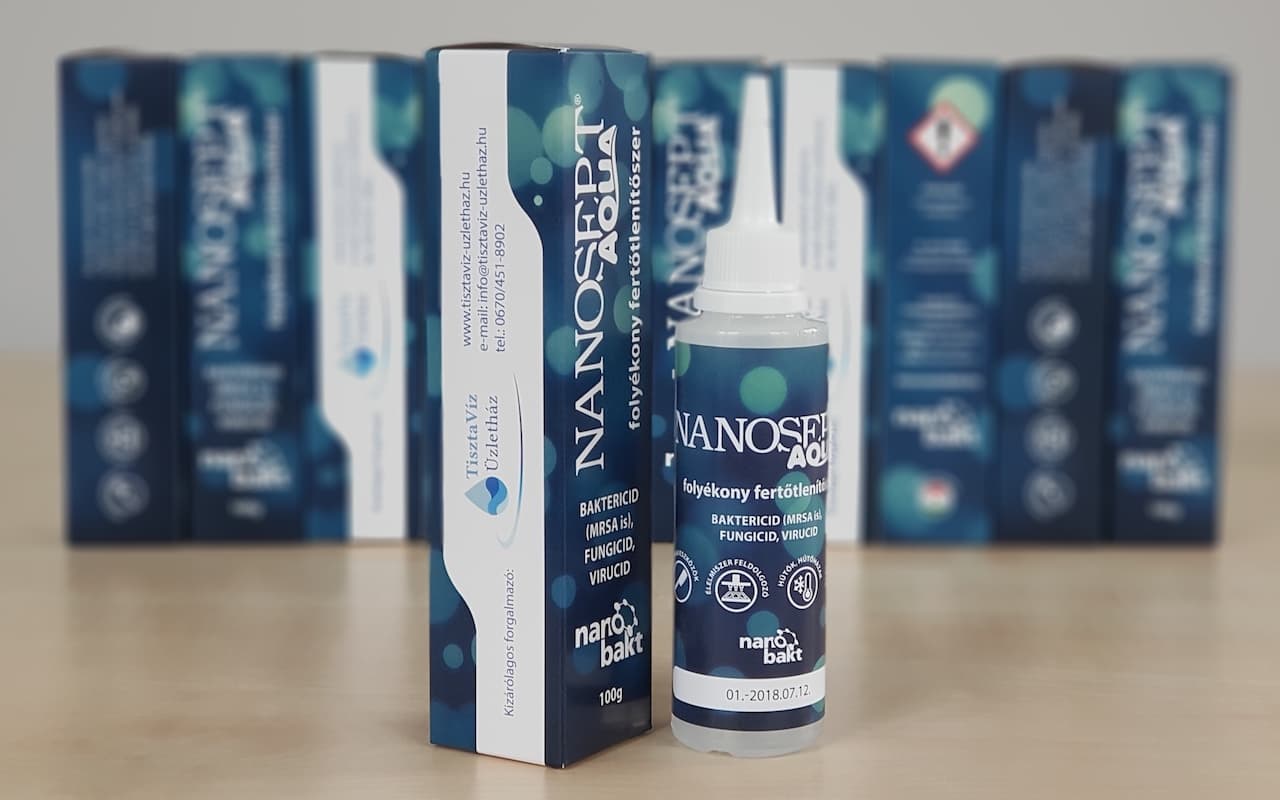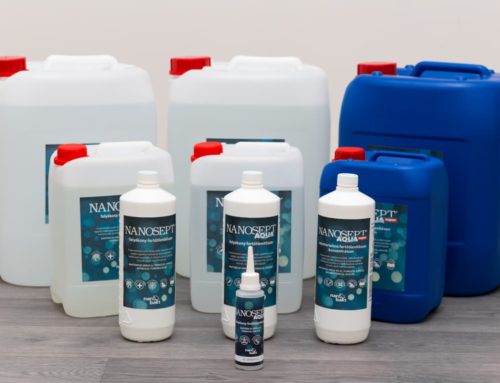Bacterial or fungal species can occur not only in hospitals, but also in our home environment, against which it is worthwhile to protect ourselves with the most effective disinfection. Although these infections are not common, they can be all the more dangerous. An example is the bacterium Legionella, which can be present in whirlpools, fountains, sprayers, or garden sprinkles, but also in the water of poorly maintained and uncleaned air conditioners. The bacterium can even cause a fatal infection, so if you use air conditioners, it is worthwhile to minimize the risk of developing an infection. In addition to Legionella, several species of bacteria and fungi that even settle in our homes can cause even milder or more serious diseases. If we want a long-term and effective solution for disinfecting our home spaces, it is worth trying modern disinfectants based on the latest technology and now available to the public.
Which bacteria and fungi can pose a serious risk of infection in home environments?
Legionella pneumophila
The first is Legionella, already mentioned above, which is a genus of bacteria comprising at least 50 species. Among the members of the genus, the species Legionella pneumophila should be singled out, as it is primarily responsible for fatal legionellosis infections in some cases.
The bacterium only causes disease if it is inhaled along with the water spray coming out of the air conditioner and gets into the lungs (i.e. we can bathe in water that also contains the bacteria, or we can swim in it or even drink it and we will have no problem).
If we are healthy, the infection is usually defeated by our immune system (fever, headache, or worse, atypical pneumonia can develop), but people with weakened immune systems, such as elderly and those with chronic illnesses, can even be at serious risk to their lives.
It should be noted that although the domestic number of reported infections is low (less than 100 cases per year), several estimates suggest that the number of reported cases is only a fraction of the actual number of cases.
Systematic fungal infection
The so-called systematic fungal infection is more common than legionellosis infection, and, like legionellosis, it can occur in the case of improperly cleaned air conditioners.
The spores of fungi entering the airways mainly cause lower respiratory disease and pneumonia. If treatment is not started in time, fungal species can cause inflammation in other organs, such as the heart, kidneys, eyes, or even the meninges. As with Legionella bacteria, people that are debilitated, elderly, or suffer from chronic illness are particularly prone to severe symptoms caused by the infection.
Pseudomonas aeruginosa
In addition to air conditioners, Pseudomonas aeruginosa, a species of the Pseudomonas Bacterial genus that can also pose a threat to human health, can settle in the humid environment of drains, toilet cisterns, hand basins and faucets. Infection with the bacterial species most often results in infection of the external auditory canal and a rash of small pimples, but with weaker immune defences, even more severe lung infections can develop.
How can we be protected against these bacteria and fungi?
Although there are many disinfectants on the market, there are now choices that are more effective than the usual ones against bacterial and fungal infections.
The antibacterial properties of silver have been known for centuries, which can now be combined with the possibilities offered by nanotechnology. This is how the silver-containing disinfectant (the Nanosept product group) was born, which can provide a long-term antimicrobial effect on treated surfaces.
How does Nanosept work?
When Nanosept is used, the hydrogen peroxide compound in the disinfectant releases active oxygen in atomic state, which in itself has an antimicrobial effect. This antimicrobial effect is prolonged for up to several days by the nanosilver particles in the disinfectant, which is also confirmed by laboratory tests.
How do silver particles work?
During the encounter of bacteria / fungi and silver particles, an oxidation-reduction reaction takes place.
The compounds that make up the cell wall of a bacterium or fungus react with the silver particles – oxidizing them – and as a result, silver ions are released from the surface of the silver particles. While the compounds that make up the cell wall of microbes oxidize silver, in the process, these compounds themselves are transformed (reduced).
As the building blocks of the cell wall are transformed during the chemical reaction, the cell wall, which protects the bacterium, is damaged, so that silver ions can easily get inside the bacterial and fungal cells. Silver ions then bind to enzymes vital to bacteria and fungi that catalyse the metabolic processes of microorganisms.
These enzymes of the pathogens then undergo a chemical transformation and therefore no longer able to perform their normal function, causing microbial death.
Non-toxic
Due to the above, the antibacterial effect of Nanosept is maintained even after the decomposition of small amounts of hydrogen peroxide.
The disinfectant does not contain chlorine and is therefore non-toxic. During the decomposition of one of the main components of the product, hydrogen peroxide, no harmful, dangerous or harmful substances are formed for the environment and humans.
How do you use Nanosept for home disinfection?
- Regular wiping of washable floor, wall surfaces and ceramic tiles with Nanosept helps to maintain the hygiene of the room. By washing the tiles with Nanosept we can also permanently remove the mold that has settled in the joints and cracks.
- Nanosept-soaked wipes can be used to disinfect handles, clothes, dryers, pins etc.
- Nanosept can be used to disinfect toilet bowls, washbasins, bathtubs, drains, and overflow pipes, and to prevent the transmission of pathogens from these surfaces, it is recommended to clean the inside of the toilet bowl regularly with Nanosept disinfectant. Cleaning the underside is also essential!
- Disinfect small items by soaking in Nanospet disinfectant. Let the Nanosept solution work for 1-2 minutes, then rinse the cleaned objects thoroughly.
- The mop bucket and mop cloth will be clean by adding diluted Nanospet disinfectant to the bucket, placing the cloth in the bucket, soaking for 10 minutes, and then rinsing with clean water.
Dosage instructions
- Use Nanosept without dilution to clean and disinfect toilet bowls, washbasins, bathtubs, drains and overflows, and sewers.
- Nanosept disinfectant cleaning spray concentrate should be used to remove mold stains between tiles or joints, so with ensuring the appropriate exposure time the wiped tiles regain their original cleanliness.
- To clean and disinfect flooring ceramics and other surfaces, use Nanosept diluted four times. An example of this is: add 2,5 dl (250 ml) of Nanospet concentrate to 1 liter of water to wipe the surfaces.
Performing disinfection
Nanosept disinfectant can be used as a concentrate or diluted. When diluting, the working solution must always be prepared immediately before use. The effect of disinfection is increased if the surfaces are pre-cleaned.
Workflow
Spray the surface gently with the nozzle and allow to dry. The active oxygen released on the surface disinfects quickly and efficiently, while the silver particles remaining after drying exert a long-lasting disinfecting effect on the surface.
The disinfectant containing silver particles can also be easily applied to the surfaces with a sponge, brush or other suitable device. It is advisable to apply the product to hard-to-reach surfaces to be disinfected by means of a spray head and to allow it to dry on the surface after the exposure time has elapsed.
It is important that in the case of food contact surfaces, the surface must always be rinsed with clean water.
Occupational safety and accident prevention regulations
Warning!
Do not mix with other agents, substances or detergents! It can change the colour of dyed materials and surfaces, so it is advisable to test before use. Use protective equipment, note the R and S information and the applicable work and contact protection regulations.
Protective gloves, protective clothing and goggles must be worn when working!



